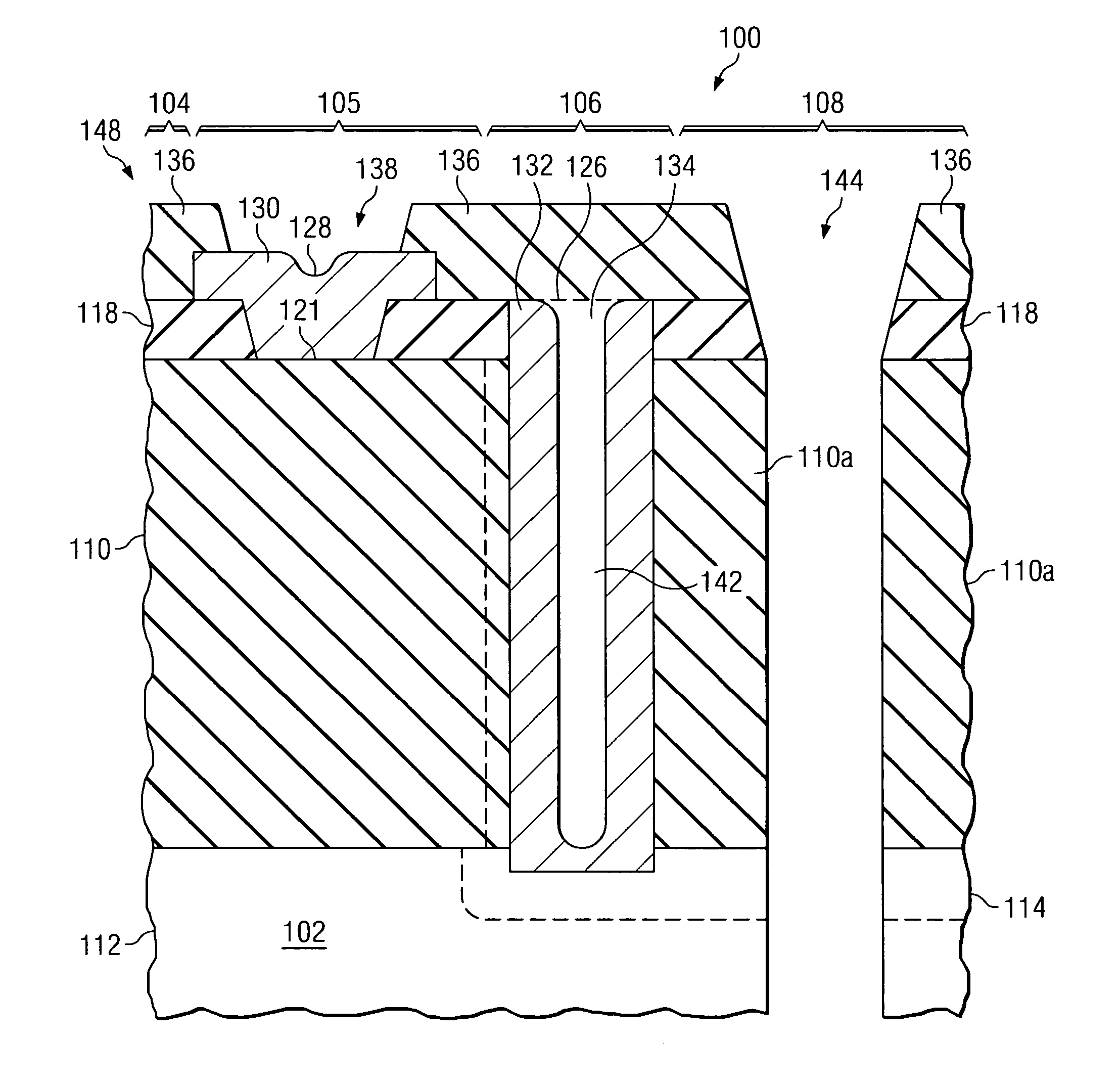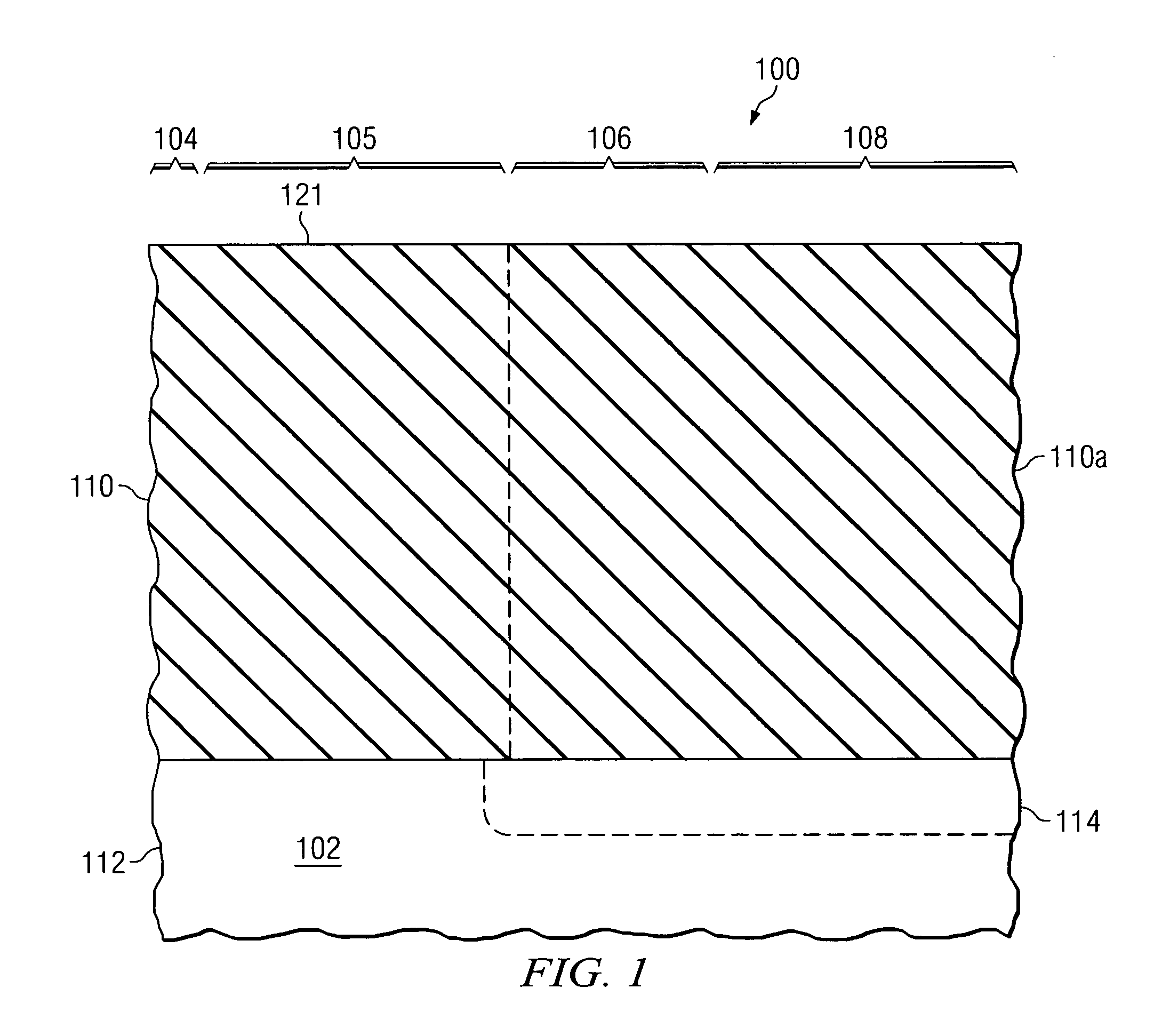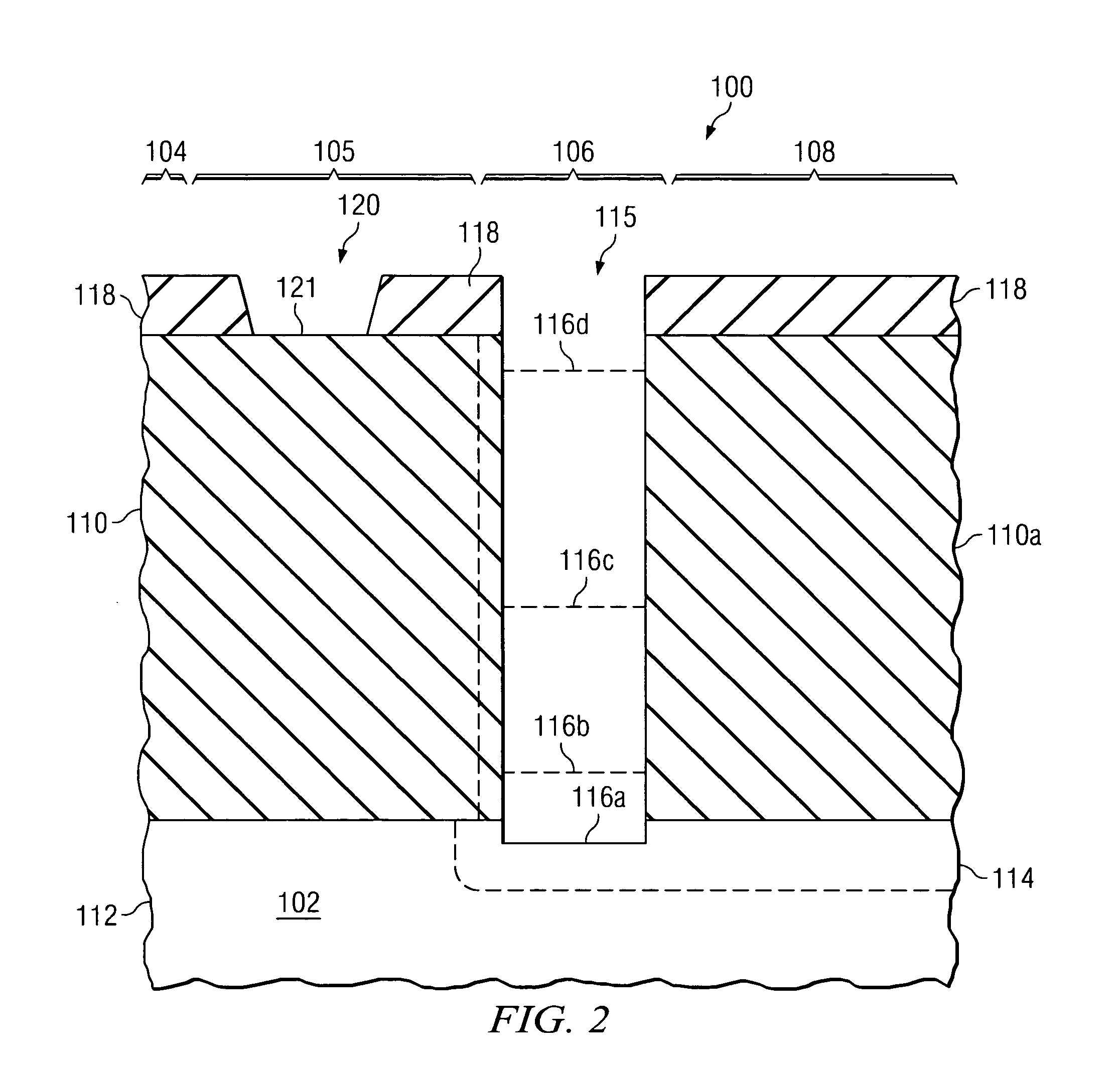Method of manufacturing semiconductor device with crack prevention ring
a technology of crack prevention and semiconductor devices, applied in semiconductor devices, semiconductor/solid-state device details, electrical devices, etc., can solve the problems of increasing the complexity of manufacturing process, increasing the functional complexity of integrated circuits, and challenging various aspects of multi-level interconnect processes, so as to prevent cracking and improve device yield , the effect of high mechanical strength
- Summary
- Abstract
- Description
- Claims
- Application Information
AI Technical Summary
Benefits of technology
Problems solved by technology
Method used
Image
Examples
Embodiment Construction
[0020]The making and using of the presently preferred embodiments are discussed in detail below. It should be appreciated, however, that the present invention provides many applicable inventive concepts that can be embodied in a wide variety of specific contexts. The specific embodiments discussed are merely illustrative of specific ways to make and use the invention, and do not limit the scope of the invention.
[0021]The present invention will be described with respect to preferred embodiments in a specific context, namely a semiconductor device having low dielectric constant materials as insulating layers. Embodiments of the invention may also be applied, however, to other semiconductor devices comprising more traditional dielectric materials and ultra-low dielectric constant materials, as examples.
[0022]FIGS. 1 through 5 and 6a show cross-sectional views of a semiconductor device at various stages of manufacturing in accordance with an embodiment of the present invention. Referrin...
PUM
 Login to View More
Login to View More Abstract
Description
Claims
Application Information
 Login to View More
Login to View More - R&D
- Intellectual Property
- Life Sciences
- Materials
- Tech Scout
- Unparalleled Data Quality
- Higher Quality Content
- 60% Fewer Hallucinations
Browse by: Latest US Patents, China's latest patents, Technical Efficacy Thesaurus, Application Domain, Technology Topic, Popular Technical Reports.
© 2025 PatSnap. All rights reserved.Legal|Privacy policy|Modern Slavery Act Transparency Statement|Sitemap|About US| Contact US: help@patsnap.com



